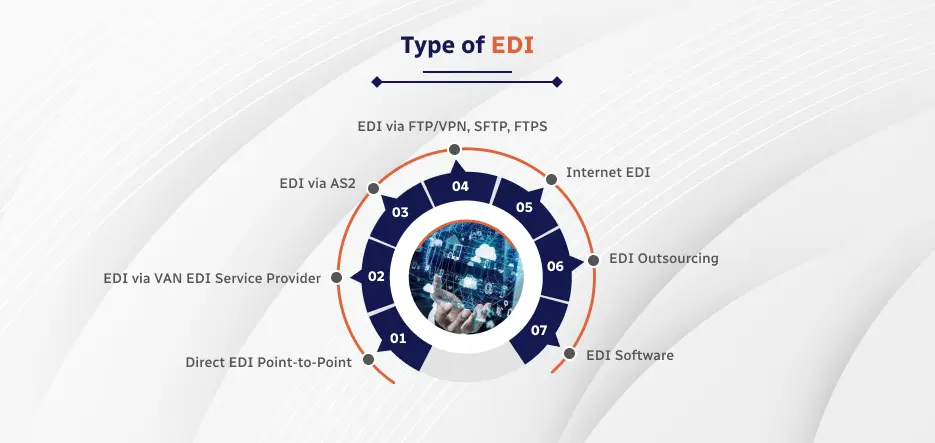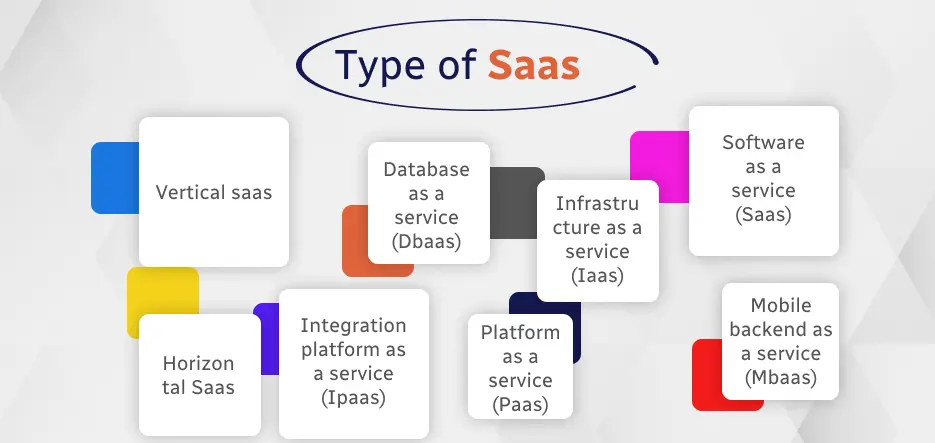Table of Contents
What occurs when cloud and EDI interact? You obtain EDI as a Service, or the more effective—and significantly less costly and laborious—cloud model, which gives you the self-service capability to manage everything. Your internal backend applications (ERP, TMS, CRM, WMS, etc.) can quickly and easily communicate with the EDI-enabled stakeholders in your trading partner ecosystem when you have direct control over them.
This makes far more seamless B2B data and document flows possible throughout your revenue-critical end-to-end business processes. It includes load tender to invoice, payment to payment, and order to cash. The market for Electronic Data Interchange (EDI) software was estimated to be worth USD 1.78 billion in 2022 and is expected to expand at a compound annual growth rate (CAGR) of 12.5% from USD 1.98 billion in 2023 to USD 4.52 billion by 2030.
Having an EDI-as-a-service solution in place can help your business stay competitive, scale more quickly, and drive greater value throughout your multi-enterprise ecosystem, strengthening crucial business relationships. eCommerce is growing rapidly, and customers and partners are expecting omnichannel fulfillment capabilities. This is beneficial since EDI-as-a-service solutions make it simple to overcome the difficulties associated with “traditional” or on-premise EDI.
EDI: What Is It?
EDI stands for Electronic Data Interchange, is a set of standards. The standards define how the exchange of data will occur among two businesses that regularly do business with each other. They are sometimes known as “trading partners.”
This “information,” which could have been a purchase order, invoice, shipping notification, or medical claim, used to be printed on paper and mailed. The recipient manually entered the data into their internal systems after the document arrived, presuming it didn’t disappear en route. However, this was costly, ineffective, and unreliable; as a result, EDI services were created.
By doing away with these erratic, manual procedures, EDI services save trading partners a tonne of time. It establishes the format for data, ensuring that whole industries are in agreement. Additionally, it electronically automates data flow, ensuring secure delivery and receiving.

SaaS: What Is It?
SaaS is a relatively new approach to access and payment for software by enterprises. Companies subscribe to software and applications created by third-party vendors, and access it via the cloud, rather than “owning” the program themselves.
“On-premise” or “on-prem” is a term applied to the very same kind of software that one buys, owns, and uses instead of SaaS. The on-premise software doesn’t exist on the cloud. It lives on a server—kept, rather—often retained in businesses’ offices.
SaaS is, in many respects, a better way to use software, as the advantages listed below demonstrate. It’s more flexible, less demanding, and, all things considered, less costly. Thus, it should come as no surprise that the SaaS market is expanding rapidly worldwide. At a compound annual growth rate of 27.5%, it is projected to soar from $130.69 billion in 2021 to $716.52 billion in 2028.
EDI-as-a-Service: What is it?
With the advantages of agility, simplicity, and ease of integration, EDI-as-a-service is a 21st-century EDI overhaul that essentially attempts to bring about digital supply chain transformations. When we discuss EDI-as-a-service we are referring to cloud-based solutions that are inclusive and adaptable. They usually function in a hybrid manner, combining several EDI formats with the advantages of managed services and software-as-a-service.
Although the terms hybrid EDI and SaaS are sometimes used interchangeably, neither fully captures the range of capabilities that are provided by EDI-as-a-Service. Instead, this focus combines the most advantageous aspects of several EDI support service options into a single system, such as:
- WebEDI tools
- Managed EDI services
- EDI via VAN
- Point-to-point EDI
- And more
Furthermore, EDI-as-a-service deploys managed services as needed to assist in delivering EDI outputs “as-a-service” and uses SaaS capabilities to streamline access to EDI support. The simplicity with which these inclusive procedures enable even unpredictable supply chains could soon become a make-or-break factor when it comes to agility and strategic planning. In light of this, EDI-as-a-service is a crucial component of finally putting supply chains and ongoing support at the forefront of business.
Challenges with On-Premise EDI
The following list of typical problems that businesses encounter with “old school” EDI systems explains why switching to a cloud-based EDI solution for B2B supply chain now makes so much sense:
Increasing Prices
It might be costly to maintain outmoded and legacy EDI systems. Owning EDI-managed services and software means that managing it all takes a variety of human and financial resources within the company. In addition, the hours and expenses associated with maintenance accumulate quickly when something goes wrong.
Scalability
Even though EDI is a widely used, standardized data format, you must be able to support the EDI needs of the other participants in your digital ecosystem. Many trading partners have different criteria, even for conventional EDI. When your organization expands, outdated, in-house, or one-off EDI-managed services won’t be able to handle all the data needs needed to be a member of your ecosystem.
Absence of Automation
Because traditional EDI mapping solutions cannot natively interface EDI with an ERP or CRM for end-to-end processing, they are typically rather restrictive and limited to performing certain EDI services. It is one thing to automate EDI transmission; it is another to automatically convert EDI into the necessary internal format. Businesses attempt to solve it by slamming people and physical resources at the issue, but this approach is scalable, inefficient, and takes a lot of time.
Intricacy
The volume of errors that occur from their EDI transactions might overwhelm businesses. Furthermore, without the appropriate technology, certifying each segment to make a transaction EDI-compliant might be difficult. Now contrast these drawbacks with a few of EDI as a Service’s clear advantages:
Cost-Reduction
Because your company won’t need to invest in all the servers, operating systems, and qualified personnel that were necessary in the past, you’ll pay less upfront with EDI as a service. Plus, you’ll enjoy predictable ongoing expenditures depending on consumption rates and subscription fees, so you’ll always know where your money is going.
Deployment Simplicity
The ability to link with other corporate systems and applications, like ERP, to automate EDI order processing or full end-to-end business cycles, such as order to cash and procure to pay, is one of the main advantages of contemporary managed EDI providers for B2B integration. In addition, updates are “pushed” to you immediately via the cloud, so there’s virtually no software to manage. Also, it is quicker and easier to implement.
Accessibility
Your EDI-as-a-service solution may be accessed by you and, if preferred, your important trading partners at any time, from any location, on any device, thanks to its cloud-based architecture. Additionally, by onboarding new trading partners up to 300% faster—often with pre-built connectors from a large library of options. You can also increase the scalability of the ecosystem.
Now that you are aware of some of the disadvantages of “old school” EDI as opposed to contemporary, cloud-based EDI solutions, how can you decide which EDI solution provider is best for your company to work with?
EDI as a service vs. on-premise
Depending on their interests and organizational structure, companies wishing to deploy EDI have a variety of strategies. They have the option of using an outside EDI provider (SaaS EDI) or setting up and maintaining their own on-premise EDI solution in this section let’s compare the differences between EDI-as-a-service and on-premise EDI:
| Feature | EDI SaaS (Software as a Service) | On-Premise EDI |
|---|---|---|
| Deployment | Cloud-based, accessed over the internet | Installed and managed on internal servers |
| Management | Managed by an external EDI provider | Managed in-house by the internal IT team |
| Maintenance & Updates | Handled by EDI provider | Handled in-house |
| Technical Skills Required | Minimal, provided by EDI provider | High, requires in-house technical expertise |
| Accessibility | Accessible remotely via a web browser or API | Limited to the internal network |
| Cost | Lower overhead, subscription-based | Higher overhead, significant upfront investment |
| Scalability | Easily scalable, flexible | Less flexible, limited by internal resources |
| Server & Storage | Cloud-hosted, no internal servers needed | Requires internal servers and storage |
| Suitability for SMEs | More accessible and affordable | Often out of budget for smaller organizations |
| Technology | Modern, utilizes the latest cloud technologies | Older, often considered legacy systems |
The Main Advantages of SaaS EDI
Let’s take a look at the main advantages of EDI as a service:
Simplify the procedures for communication
The most common grievance we receive from clients is that they are unable to spend enough time on their business. Rather, they are spending too much time following up through various communication channels. EDI as a Service solutions provide the chance to combine these exchange procedures. Communication flows can also be linked into a multifunctional, all-in-one platform with cloud-based EDI services.
Fulfill the requirements of the new business processes.
Customers may manage their whole supply chain and business activities from a single interface by integrating an EDI-as-a-service solution into an all-in-one style B2B platform or by adapting it to work with all different kinds of device formats. Furthermore, this platform is regularly updated and maintained, enabling the addition or removal of features as needed. More flexibility and adaptability are possible with cloud-based solutions in every aspect. Particularly, when it comes to modifying corporate procedures to accommodate shifting market conditions.
Several features
A lengthy list of crucial features, including flow monitoring, message archiving, connection protocol management, system alarms and warnings, and additional advantages like KPI and analytics reporting, B2B network management, e-invoicing, digital archiving, and collaborative portals, are typically included with the EDI as a Service solution. All of this is available via a single, user-friendly client interface.
Lowering of total expenses
Customers can select from a variety of price options, and client-specific SLAs are created and adjusted to meet client needs. In essence, EDI-as-a-service solutions provide scalable pricing alternatives and eliminate the need for pricey gear and software.
Regular upkeep and improvements
The risk of device obsolescence is also eliminated when moving to an EDI as a Service solution because external updates and maintenance are regularly performed on the system. This shifts accountability from your IT team to the EDI service provider, who must now make sure their clients are utilizing all of the features that are provided.
Safety and adherence
High-level security protocols are included in every EDI as a Service platform to guarantee consistent data protection. These solutions also guarantee that all technical certifications (ISO) are current, enable access to be configured and managed, and adhere to national and international legislation and guidelines (e.g., HIPAA, Sox, etc.) as needed. The fact that the supplier handles everything is a significant benefit.
Scalability of performance
Nothing is more frustrating than having your technology and software fall behind as your organization grows. EDI as a Service‘s ability to be readily expanded to meet production needs and adjust to peak and off-peak hours is one of its many advantages. Scalable payment plans are supported by the configuration of SLAs.
Enhanced client support
Depending on your contract, you can also expect varying degrees of multilingual support and maintenance if you choose a cloud-based solution and outsource your EDI requirements from top EDI providers. Because SaaS platform suppliers have an incentive to continuously surpass their competitors in terms of customer support, you may anticipate a wide range of extra services, such as risk management, migration, and staff training initiatives. Typically, a standard EDI service provider would not offer these kinds of regular services.

Five Considerations for Evaluating a SaaS EDI Solution
The greatest supply chain management requires a service provider who understands your objectives. It’s not always simple to find the ideal EDI as a Service to support integrations. There are a few useful methods to choose the right EDI service provider for your company. From highest priority to lowest priority, these are the things you should be searching for.
Requirements for Compliance
Your trading partners’ compliance standards should be known to your EDI as a Service. Whether they be label specifications or EDI specifications. It must offer support and customizations as well.
Time of implementation
Selecting the appropriate EDI-as-a-service can help shorten the turnaround time. Find out how long it takes for the service to integrate with trading partners and the ERPs and WMSs that your business currently uses.
EDI quantity
The EDI transactions you make now and in the future ought to be supported by the EDI as a Service. If you intend to scale your EDI traffic up or down, it shouldn’t cause any issues. It ought to change to fit your EDI volume.
Client assistance
Support, despite being fourth on the list, is the most important factor in resolving EDI problems. Your company’s growth may be impacted by subpar customer service. Verify that the EDI service you choose has professionals who respond to your questions promptly.
Costing
Despite being significantly more sophisticated in their use, EDI as a Service is somewhat less expensive than conventional EDI provider options. You can still evaluate different EDI solutions, though, to choose which one best suits your needs and is the most affordable.
Conclusion
That’s all there is to know about how EDI-as-a-service can help you achieve long-term company viability and full ecosystem enablement. It’s an essential strategy for today’s dynamic, cloud-based B2B, eCommerce-driven environment where partners and customers have high expectations and where the agility of your supply chain can significantly impact your competitiveness.
Top EDI companies can use EDI-as-a-service to combine all the advantages of cloud computing and EDI into a single piece of software. Any kind of EDI solution improves speed, efficiency, and visibility; the cloud delivery component amplifies these benefits. When you factor in low expenses, upkeep, and time-to-benefit, EDI-as-a-service starts to appeal to a lot of companies.






